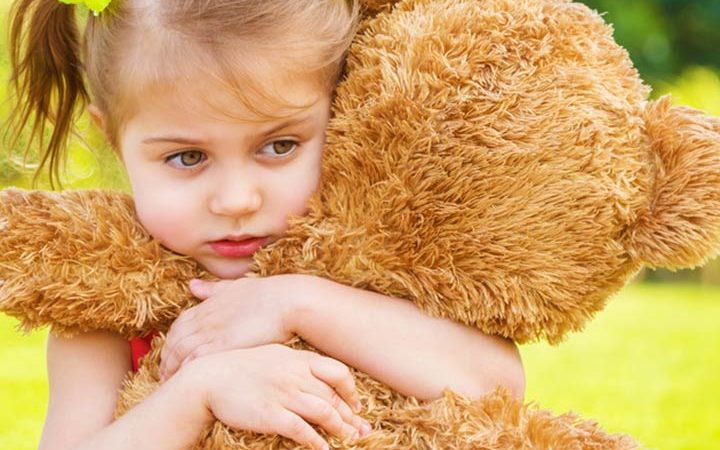An adjustment disorder is an emotional or behavioural reaction to an upsetting event or change in life. This reaction is unhealthy and may last longer than usual. It usually happens within three months of the identifiable triggering event (1) (2).
The symptoms of adjustment disorder vary from one child to the other. However, importantly, the child will act or feel noticeably different from how they felt or behaved before the stressful event. Read about the types, causes, risk factors, symptoms, treatment, and prevention of adjustment disorder in children.
Symptoms Of Adjustment Disorder
Some common signs and symptoms of adjustment disorder in children are (1):
- Avoiding school, family, and friends
- Fighting with peers and family members
These symptoms interfere with the child’s daily life and routine.
Types Of Adjustment Disorder
There are six subtypes of adjustment disorder classified based on the symptoms a child experiences (3).
Adjustment disorder with depressed mood
Adjustment disorder with anxiety
Adjustment disorder with anxiety and depressed mood
Show symptoms of both anxiety and depression
Adjustment disorder with disturbance of conduct
- Encroachment of others’ rights
- Violating the rules and norms of society, such as destructing property, fighting, reckless behaviour, vandalism, and stealing
Adjustment disorder with mixed disturbance of emotions and conduct
Shows a combination of symptoms from all the above subtypes
Adjustment disorder unspecified
The symptoms do not fit into any subtypes mentioned above. However, the reactions to identifiable triggering events may include and inhibitions to the usual activities.
The above symptoms may also be experienced in some other medical conditions. Your child’s healthcare provider will help you arrive at the correct diagnosis.
Causes Of Adjustment Disorder In Children
Adjustment disorders are a reaction to some outside triggers or stressors. The reaction may differ based on how long the stressors last, how strong they are, and their effect on the child (3). Also, each child may have varying susceptibility, state of mind, and coping skills. Therefore, it is impossible to pinpoint the cause of adjustment disorder (2).
Some examples of stressors for adjustment disorders in children are:
- Natural disasters, such as earthquakes or tsunamis
- Diagnosis of a serious disease in parents or siblings
- Experiencing, witnessing, or being involved in violence
Incidence and prevalence of adjustment disorders in children (3).
- Happen equally in males and females.
- Might happen in all cultures, but the triggers and signs may differ due to cultural influences.
- Occur in all age groups, but the characteristics vary from children to adolescents.
Diagnosis Of Adjustment Disorder In Children
A qualified mental health professional will do a detailed psychiatric analysis and talk to the child and parents. The doctor will also ask for a detailed history of how and when the negative emotions began to develop and identify the root cause.
Treatment For Adjustment Disorder In Children
The treatment depends on the child’s age, general health, medical history, the severity of the symptoms, subtype, expectations from the treatment, and tolerance towards treatments.
The treatment options for adjustment disorders may include (3) (4).
- Individual psychotherapy using cognitive-behavioural approaches
Cognitive behavior therapy helps in improving age-appropriate skills on problem-solving, communication, impulse control, anger control, and stress management.
It focuses on improving interaction and communication skills within the family. The therapy also helps in strengthening the mutual support amongst the family members.
It focuses on developing social and interpersonal skills.
Medicines have a limited role to play in the treatment of adjustment disorders. However, the doctor may prescribe a particular medicine based on how a particular symptom responds to the medicine.
Prevention Of Adjustment Disorder In Children
Prevention is not possible as the exact cause is unknown. However, early diagnosis and intervention can help in reducing the severity of symptoms. It also helps in normal growth and development and improves the child’s quality of life (3).
Older kids with untreated adjustment disorders are at a higher risk of developing depression, chronic anxiety, substance abuse, etc. (5). If you suspect your child with an adjustment disorder, discuss their behaviour with other caregivers such as coaches, teachers, or daycare providers. An accidental event or stressful episode at the child’s school might trigger, and you may be unaware of it.
References:
MomJunction’s articles are written after analyzing the research works of expert authors and institutions. Our references consist of resources established by authorities in their respective fields. You can learn more about the authenticity of the information we present in our editorial policy.
The following two tabs change content below.




































